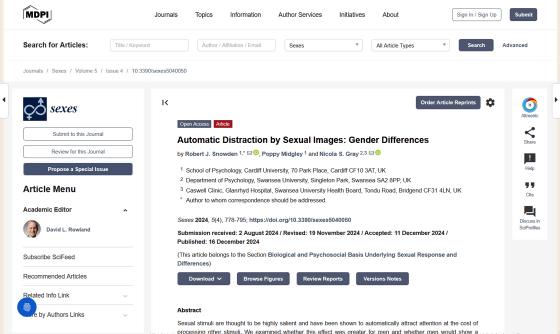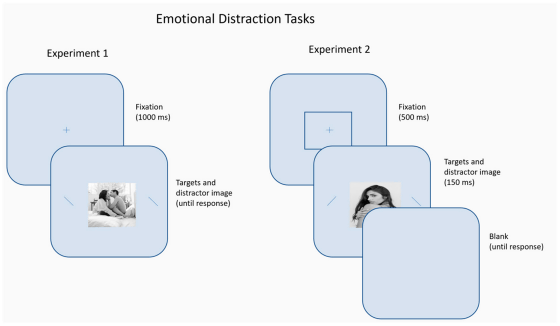Research shows that men are more easily distracted by erotic images than women

Some people may have had the experience of being distracted by sexual advertisements or billboards while browsing social media or websites or walking around town. A British study showed that men are more likely to be distracted by sexual images than women.
Automatic Distraction by Sexual Images: Gender Differences

Men are more distracted by sexual images than women
https://www.psypost.org/men-are-more-distracted-by-sexual-images-than-women/
It has been shown that when humans look at a variety of images or scenes, they do not respond to everything at the same time, but rather react to some stimuli more quickly or slowly than others. For example, people react more quickly to images that they perceive as threatening.
On the other hand, responses to sexual stimuli are different from other stimuli, and previous research has identified a phenomenon called 'sexual content-induced delay.' In one study, subjects were asked to judge whether a series of letters was a meaningful word or not, and it was shown that if the letters were sexual words, they were slower to judge than other words. It is thought that this delay may occur because sexual stimuli change cognitive priorities and distract attention from other tasks.
Recently, a research team led by Robert Snowden, a professor of psychology at Cardiff University in the UK, conducted an experiment to examine how sexual images affect performance on simple tasks and how the effects differ by gender and sexual orientation.
The subjects were recruited from around the School of Psychology at Cardiff University, with an average age of 22, 21 men and 22 women. The subjects were given a simple task: to compare the orientation of two lines and determine whether they were parallel or not. During this task, the subjects were shown a variety of images.

Ten of the images were of heterosexual couples engaged in sexual activity, ten were of nude or partially clothed women not engaging in sexual activity, ten were of nude or partially clothed men not engaging in sexual activity, ten were of people in neutral environments such as shopping or working, and ten were of objects such as clocks, boats and gardens.
Participants were shown these images while completing the task, but were told to ignore them as they were not relevant to the task. Each subject completed a total of 150 trials, with each image shown three times. Participants also reported their own sexual orientation.
In a separate experiment, 131 young people from Cardiff University were shown images during a similar task: five of nude or partially clothed men, five of nude or partially clothed women, and 20 neutral images, but in this case the images were only shown for 0.15 seconds during the task.

As the researchers predicted, participants reacted more slowly when exposed to sexual images. In the first experiment, the slowdown in reaction time to sexual images was more pronounced in men than in women, and the greatest delays were observed when participants were shown images of heterosexual couples engaged in sexual activity.
In a second experiment that did not use images of heterosexual couples engaged in sexual activity, the men's slowing down depended on whether the images matched their own sexual orientation. That is, heterosexual men were slowed down the most when they saw images of nude or partially clothed women, and their slowing down was less when they saw images of nude or partially clothed men than when they saw images of women. However, they still reported faster reaction times when they saw neutral images than when they saw images of nude or partially clothed men.
In contrast, female subjects experienced a similar decrease in reaction time when the images were sexualized, regardless of whether they were male or female, but their reactions to neutral images remained faster.
Based on these results, the research team concluded, 'This study shows that the sexual distraction effect is greater for men than for women in a simple perceptual decision task. Furthermore, the distraction effect for men was category-specific (female images were more distracting) whereas the distraction effect for women was category-nonspecific.'

Related Posts:
in Science, Posted by log1h_ik







